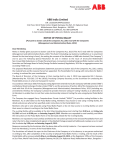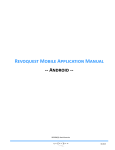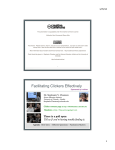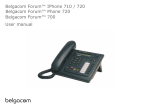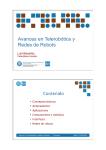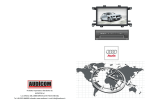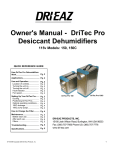Download G U I D E
Transcript
UseAndCare G U I D E No-Frost RefrigeratorFreezer Model ET16AK Refriderator-Freezers, Ice makers, Dishwashers, Built-in Ovens and Surface Units, Ranges, Microwave Ovens, Trash Compactors, Room Air Condi/oners, Dehumidifers Conte nt s Safety First ..........................................................................................1 Safety Alert Definitions ..................................................................1 Installation ............................................................................................3 Install It Properly ............................................................................3 Level It ...........................................................................................3 Remove Sales Labels .....................................................................4 Clean It ...........................................................................................4 Plug It In ......................................................................................... 4 Using Your Refrigerator ...................................................................5 Parts and Features............................................................................2 Set The Controls .............................................................................5 Power Saving Control ....................................................................5 Change The Control Settings ..........................................................6 Control Setting Troubleshooting Chart ..........................................6 Move The Meat Pan and Cover ......................................................7 Remove Crispers and Crisper Cover ..............................................7 Change The Light Bulb .................................................................8 Adjust The Refrigerator Shelves ....................................................8 Remove and Adjust The Freezer Shelf ..............................................................8 Energy Saving Tips ........................................................................9 Sounds You May Hear ....................................................................9 Vacation and Moving Care............................................................10 Ice Cube Trays .............................................................................11 Optional Automatic Ice Maker .....................................................11 Food Storage Guide .......................................................................12 Proper Storage–Fresh Food ..........................................................12 Proper Storage–Meat ....................................................................12 Proper Storage–Frozen Food .......................................................13 Cleaning Your Refrigerator .......................................................14 Cleaning Chart ..............................................................................14 Whirlpool Refrigerator Warranty .............................................16 Troubleshooting .............................................................17 Before Calling For Assistance ......................................................17 Service Contacts21 If You Need Assistance .................................................................21 If You Need Service .......................................................................21 If You Have a Problem...................................................................21 i Whirlpool Use and Care Guide–No-Frost Refrigerator-Freezer–Model ET16AK Safety First IMPORTANT Rules for Safe Installa/on and Opera/on Before doing anything else, please read these rules for safe installation and operation. 1. 2. 3. 4. 5. 6. 7. 8. 9. 10. 11. 12. 13.. 15. 16. 17. 18. 19. 20. 21. 22. 23. 24. To ensure safety from entrapment and suffocation, unused refrigerators must have the door removed. Please read the enclosed safety booklet from the Association of Home Appliance Manufacturers. When prepping refrigerator for long vacations, tape rubber or wood blocks to doors and out of reach of children. Make sure refrigerator is installed and leveled on a floor that will hold the weight. Refrigerator must be plugged in properly. Refer to “Recommended Grounding Method” instructions (Page 4). Determine the refrigerator will fit the area installing. Do not install near an oven, radiator, or other heat source. Do not use an extension cord. Use a receptacle which cannot be turned off with a switch or pull chain. Use refrigerator only for jobs expected of home refrigerators. Always maintain refrigerator according to instructions (Page 5). Refrigerator is not for outdoor use. Do not install refrigerator where the room temperature is less than 55º F (13º C). Do not use rubbing alcohol or flammable or toxic solvents to remove labels. Refrigerator usage is to be limited to those with a working knowledge of the appliance. Keep refrigerator empty until it reaches the proper temperature for food storage. Do not remove any permanent instruction labels inside refrigerator. Do not remove the Tech Sheet fastened under the refrigerator at the front. Before removing lightbulb, unplug or disconnect refrigerator. Be aware that the glass shelving is heavy when moving it. Turn refrigerator control off, unplug refrigerator, and take out all removable parts prior to cleaning. Store fresh and frozen foods as instructions outline. When moving the refrigerator, remove all food from refrigerator first. Clean refrigerator, as instructions outlined, prior to first use. Your safety and the safety of others is very important. Always read and obey all safety messages. This is the safety alert symbol. This symbol alerts user to potential hazards that could kill or hurt them and others. All safety messages will follow the safety alert symbol and either the word “DANGER” or “WARNING.” Danger designates immenent death or very serious injury. CAUTION Warning designates serious injury. Caution designates minor injury or product damage. All safety messages will describe the hazard, describe the consequences, and instruct you how to avoid it. Whirlpool Use and Care Guide–No-Frost Refrigerator-Freezer–Model ET16AK 1 Parts and Features Parts and Features (Figure 1) Proper Disposal of Refrigerator Proper Disposal of Refrigerator (Figure 2) Suffoca3on Hazard. Refrigerator entrapment can cause death. Remove refrigerator doors prior to disposing. Do the following prior to disposing of old refrigerator-freezer: •Remove the doors (See Figure 2). •Leave shelves in place to keep children from climbing inside. 2 Whirlpool Use and Care Guide–No-Frost Refrigerator-Freezer–Model ET16AK Installa/on Excessive Weight Hazard. Heavy refrigerators can cause serious injury or death. Use two or more people when moving refrigerator. 1. INSTALL IT PROPERLY... 2. LEVEL IT... Install It Properly (Figure 3) Crash Hazard. Unstable floors can cause refrigerator to fall on a person. Make sure refrigerator is installed and leveled on a floor that can hold the weight. Level It (Figure 4) To properly install, do the following: (See Figure 3) 1. Allow 3 inches (7.5 cm) between overhead cabinets and the refrigerator top. 2. Allow at least an inch (2.5 cm) between the refrigerator condenser and the wall. 3. Allow 1/2 inch (1.25 cm) on each side of the refrigerator for ease of installation. 4. If the refrigerator is to be against a wall, leave enough space so the door can open completely. To level your refrigerator, do the following: (See Figure 4) 1. To raise front, turn each screw to the right. 2. To lower front, turn each screw to the left. 3. Check with a level at base of refrigerator. Whirlpool Use and Care Guide–No-Frost Refrigerator-Freezer–Model ET16AK 3 Installa/on (Con/nued...) Explosion hazard. Igni3on of rubbing alcohol or inflammable or toxic solvents can cause serious injury or death. Do not use gasoline, carbon tetrachloride, etc. to clean this product. 3. REMOVE SALES LABELS... 4. CLEAN IT... Remove the Consumer Buy Guid label, tape, and any inside labels before use. Prior to first use, and after removing all the packaging and sales labels, clean your refrigerator. NOTE: Do not remove any permanent instruc3on labels inside your refrigerator. Do not remove the Tech Sheet fastened under the refrigerator at the front. Refer to “Cleaning Your Refrigerator” (Pages 14 and 15). To remove any remaining glue, do the following: 1. Rub briskly with thumb to make a ball and remove. OR 2. Soak area with dishwashing detergent solution (1teaspoon detergent in 1 quart warm water) before removing glue as described in step 1. 5. PLUG IT IN... Plug It In (Figure 5) Electrical Shock Hazard. Electricity can cause death or serious injury. Always make sure wall receptacle and plug are grounded before plugging in refrigerator. RECOMMENDED GROUNDING METHOD 4 (See Figure 5) A 115 Volt, 60 Hz., AC only 15 or 20 ampere fused and properly grounded electrical supply is required. Plug into a grounded three-prong outlet. Do not remove ground prong, do not use an adapter, and do not use an extension cord. It is recommended that a separate circuit serving only this appliance be provided. See individual electrical requirements and grounding instruction sheet in your literature package. Whirlpool Use and Care Guide–No-Frost Refrigerator-Freezer–Model ET16AK Using Your Refrigerator CONTROL CONSOLE... Control Console (Figure 6) SET THE CONTROLS... You will find these controls inside your refrigerator (See Parts and Features, Page 2). After plugging in your refrigerator for the first time, set the controls to these suggested temperatures to ensure the best food storage results (See Figure 6). Set Freezer control to B Set Refrigerator control to 3 NOTE: It may take several hours for the refrigerator to cool down completely. Allow it to reach desired coolness prior to adding food to the refrigerator. NOTE: A good way to determine if your refrigerator is set at the correct temperature is if ice cream is firm and the milk and juice is cold enough for you. POWER SAVING CONTROL... The Power Saving Control on the Control Console (see top of this page) operates electric heaters around the door openings. These heaters help keep moisture from forming on the outside of the refrigerator. (See Figure 6) Use the CONSUMES LESS ENERGY se4ng when humidity is low. Use the REDUCES EXTERIOR MOISTURE se4ng only if moisture forms on the outside of the refrigerator Whirlpool Use and Care Guide–No-Frost Refrigerator-Freezer–Model ET16AK 5 Using Your Refrigerator (Con/nued...) CHANGE THE CONTROL SETTINGS... Use the following guidelines when adjusting the temperatures in your refrigerator or freezer: • Adjust the Refrigerator Control first. • Wait at least 24 hours between adjustments. • Then adjust the Freezer Control, if needed. Deciding what settings to use is made easy by the chart below. CONTROL SETTINGS TROUBLESHOOTING CHART CONDITION If Refrigerator Section is TOO WARM If Freezer Section is TOO WARM If Refrigerator Section is TOO COLD If ICE isn’t MADE FAST ENOUGH If BOTH SECTIONS are TOO WARM REASONS RECOMMENDED CONTROL SETTINGS Door opened often Large amount of food added Room temperature too warm Refrigerator Freezer - 4 C Door opened often Large amount of food added Very cold room temperature (can’t cycle often enough) Refrigerator Freezer - 3 A Controls not set correctly for your conditions Heavy ice usage Very cold room temperature (can’t cycle often enough) Refrigerator Freezer Refrigerator Freezer - 2 B Door opened often Large amount of food added Very warm or very cold room temperatures Refirgerator Freezer - 4 B QUESTIONS? Call your COOL-LI!E service assistance telephone number. Continental U.S. .........................................800.253.1301 Michigan .....................................................800.632.2243 Alaska & Hawaii ........................................800.253.1121 6 Whirlpool Use and Care Guide–No-Frost Refrigerator-Freezer–Model ET16AK 3 A Using Your Refrigerator (Con/nued...) MOVE THE MEAT PAN AND COVER... The meat pan is removable for cleaning and can also be moved to another shelf if desired. To remove the meat pan and cover, do the following: Meat Pan and Cover(Figure 7) 1. Slide meat pan out to stop. 2. Lift the front of meat pan. 3. Slide pan the rest of the way out. 4. To remove cover, push up glass insert from bottom, then lift out with both hands (See Figure 7). 5. Lift cover frame straight up and out. To replace the meat pan and cover, do the following: 1. To replace cover, fit notches in cover frame sides over center shelf support. 2. Lower cover frame into place. 3. Lower glass insert into cover frame. 4. To replace pan, fit edges of pan into supports on cover. 5. Slide meat pan into place. REMOVE CRISPERS AND CRISPER COVER... (See Figure 8) To remove the crispers, do the following: Remove Crispers and Crisper Cover (Figure 8) 1. Slide crisper straight out to stop, lift front, and then, slide the rest of the way out. 2. Slide crisper back out, lift front, and then, slide in to stop. To remove the cover, do the following: 1. Push up glass insert from bottom, and then, slide out with both hands. 2. Lift front of cover frame and remove cover support. 3. Lift out cover frame by pulling up and out. Lower –> Cover <– Support To replace the cover, do the following: 1. Fit back of cover into notch supports on wall of refrigerator, then, lower front into place. 2. Replace cover support with the long tab towards the front. NOTE: If the support needs adjustment, turn base right to raise, or le$ to lower. 3. Slide back of glass insert into place, then lower front. Whirlpool Use and Care Guide–No-Frost Refrigerator-Freezer–Model ET16AK 7 Using Your Refrigerator (Con/nued...) CHANGE THE LIGHT BULB... Electrical Shock Hazard. Electricity can cause death or serious injury. Always make sure wall receptacle and plug are grounded prior to plugging in refrigerator. Change The Light Bulb (Figure 9) To change your refrigerator light bulb, do the following: 1. Reach behind Control Console to find bulb. 2. Unscrew bulb. 3. Screw a 40-watt appliance bulb in to socket (See Figure 9). ADJUST THE REFRIGERATOR SHELVES... To adjust the shelving, do the following: 1. First, remove the food from shelf. 2. Slide shelf straight out to stop. 3. Lift front (See Figure 10). 4. Slide the rest of the way out. Adjust The Refrigerator Shelves (Figure 10) Guide Stop Shelf Stop Shelf guide To replace the shelving, do the following: 1. Fit back of shelf on top of guides with wire stops on the bottom of guides. 2. Lift front, slide shelf in until it clears guide stops. REMOVE AND ADJUST THE FREEZER SHELF... To remove the shelf, do the following: Remove And Adjust The Freezer Shelf (Figure 11) 1. Lift front slightly. 2. Lift back off supports. 3. Replace in reverse order. To adjust the shelf, do the following: 8 1. Remove food from shelf. 2. Remove shelf 3. Remove supports by sliding upwards (See Figure 11). 4. Replace supports on desired level. 5. Replace shelf. Whirlpool Use and Care Guide–No-Frost Refrigerator-Freezer–Model ET16AK Shelf Support Using Your Refrigerator (Con/nued...) ENERGY SAVING TIPS... The following energy-saving tips can save you money: • Check door gaskets for a tight seal. Level the cabinet to be sure of a good seal. • Clean the condenser coil regularly. Refer to “Cleaning Your Refrigerator” section (Page 15). • Open the door as few times as possible. • Think about what you need before you open the door. • Get everything out at one time. • Keep foods organized so you do not have to search for what you want. • Close door as soon as food is removed. • Fill up the refrigerator, but don’t overcrowd it so air movement is blocked. • It is a waste of electricity to set the refrigerator and freezer to temperatures colder than they need to be. A good gauge is if ice cream is firm in the freezer and drinks are as cold, then the refrigerator-freezer is cold enough. • Keep the Power Saving Control on CONSUMES LESS ENERGY unless moisture forms on the exterior of the refrigerator. • Make sure your refrigerator is not next to a heat source such as a range, water heater, furnace, radiator, or in direct sunlight. SOUNDS YOU MAY HEAR... Be aware that the sounds you hear from your new refrigerator may be different from your old one. Most of the new sounds are normal and hard surfaces like the floor, walls, and cabinets can make these sounds seem louder. The chart below will help familiarize you with these sounds and help you understand what might be making them. Possible Sounds Probable Causes Slight Hum, Soft Hiss You may hear the refrigerator’s fan motor and moving air. Water Sounds When the refrigerator stops running, you may hear gurgling in the tubing for a few minutes after it stops. You may also hear defrost water running into the defrost water pan. Clicking or Snapping Sounds The Following Ice Maker Sounds: • Trickling water • Thud (clatter of ice) Running Sounds The defrost timer makes a definite click when the refrigerator stops running. It also makes a sound when the refrigerator starts. If your refrigerator has an ice maker, you may hear buzzing (from the water valve), trickling water, and the clatter of ice dumped into bin. Your refrigerator has a high-efficiency compressor and motor. It will run longer than older designs. It may even seem to run most of the time. Whirlpool Use and Care Guide–No-Frost Refrigerator-Freezer–Model ET16AK 9 Using Your Refrigerator (Con/nued...) VACATION CARE... Short Vaca/ons Do not shut off the refrigerator if you will be away for less than four weeks. Use up perishables; freeze other items. If your refrigerator is equipped with an autmatic ice maker, do the following: • Turn off ice maker. Refer to “Optional Automatic Ice Maker” section (Page 11). • Shut off the water supply to the ice maker. • Empty the ice bin. Long Vaca/ons Remove all food if you will be away for four weeks or more. If your refrigerator is equipped with an automatic ice maker, turn off the water supply to the ice maker at least one day prior to leaving. When the last load of ice drops, turn off the ice maker. Suffoca3on Hazard. Door blocks taped within children’s reach can cause entrapment and death. Make sure blocks are taped out of reach of children. Unplug the refrigerator and clean it. Rinse it well and dry. Tape rubber or wood blocks to both doors. Keep doors open far enough for air to get in. This will keep odor and mold from building up. To restart refrigerator, see “Set The Controls” (Page 5). MOVING CARE... Excessive Weight Hazard. Heavy refrigerators can cause serious injury or death. Use two or more people when moving refrigerator. Proper prepariation prior to moving your refrigerator will help keep refrigerator in top condition. Take the following steps prior to moving your refrigerator: 10 • If your refrigerator is equipped with an automatic ice maker, shut off the ice maker water supply a day ahead of time. • Disconnect the water line. After the last supply of ice drops, lift the signal arm to turn off the ice maker. • Remove all food. Pack frozen foods in dry ice. • Unplug the refrigerator and clean it thoroughly. • Remove all removeable parts. Wrap all parts well and tape them together to keep from shifting and rattling during move. • Screw in the leveling rollers; tape the doors shut; tape the electric cord to the cabinet. • When you get to your new home, put everything back and refer to “Installation” (Pages 3 and 4). • Reconnect the water supply line, if you have an ice maker. Whirlpool Use and Care Guide–No-Frost Refrigerator-Freezer–Model ET16AK Using Your Refrigerator (Con/nued...) ICE CUBE TRAYS... If cubes are not used, they may shrink. Slow evaperation occurs with slow-moving cold air. The longer cubes are stored, the smaller they get. To remove ice, do the following: Ice Cube Tray (Figure 12) • Hold tray at both ends. • Slightly twist (See Figure 12). OPTIONAL AUTOMATIC ICE MAKER... If you have the automatic ice maker accessory or plan to add one later (Part No. ECKMF-83), the following information is important for you to know: Op3onal Automa3c Ice Maker (Figure 13) • The ON/OFF lever is a wire signal arm (See Figure 13). • DOWN for making ice automatically. • UP to shut off the ice maker. • Shake the bin occasionally to keep cubes separated and to obtain increased storage capacity. • It is normal for ice crescents to be attached by a corner. They will break apart easily. • You will hear water running when ice maker is working. You will hear ice fall into the bin. These are normal sounds. • The ice maker will not operate until the freezer is cold enough to make ice. This can take overnight. • Because of new plumbing connections, the first ice may be discolored or off-flavored. Discard the first few batches of ice. • If ice is not making fast enough and more ice is needed, turn the Refrigerator Control to a higher number. Wait a day and, if necessary, turn the Freezer Control toward A. • If you remove the ice bin, raise the signal arm to shut off the ice maker. When you return the bin, push it all the way in and lower the arm to the ON position. • If cubes are stored too long, they may develop an off-flavor similar to stale water. Throw them away. Cubes in the ice bin can also become smaller by evaporation. • Good water quality is important for good ice quality. It is not recommended that the ice maker be connected to a softened water supply. Water softener chemicals, such as salt from a malfunctioning softener, can damage the ice maker mold and lead to poor quality ice. If a softened water supply cannot be avoided, then it is important that the water softener be well maintained and operating properly. Whirlpool Use and Care Guide–No-Frost Refrigerator-Freezer–Model ET16AK 11 Food Storage Guide Proper Storage–Fresh Food Leafy Vegetables. Remove store wrapping. Trim or tear off bruised and discolored areas. Wash in cool water. Drain. Cold, moist air keeps leafy vegetables fresh and crisp. Vegetables with Skins. Store carrots, peppers, etc., in crisper, plastic bags, or plastic container. Fruits. Store in refrigerator in plastic bags or crisper. Do not wash or hull berries until they are ready to use. Sort and keep berries in store container, crisper, or loosely closed paper bag on refrigerator shelf. Eggs. Store in refrigerator utility bin or in original container. Milk. Wipe milk carton. For best storage, place on interior shelf. Beverages. Wipe bottles and cans. Store in refrigerator door shelf. Bu0er. Keep opened package in covered dish or in butter compartment. When storing extra supply, wrap in freezer packaging and freeze. Cheese. Store unopened product in original package. Once open, re-wrap tightly in plastic wrap or aluminum foil. Condiments. Store catsup, mustard, jelly, olives, etc., in door shelves for easy access. Le"overs. Cover with plastic wrap or aluminum foil or plastic containers with tight lids. NOTE: Packaging and storing fresh foods correctly will ensure product freshness. Proper Storage–Meat* Food Poisoning Hazard. Rancid meat or fish may cause serious illness. Always store meat and fish as suggested below. Fresh, Prepackaged Meat. Store fresh meat in store wrapping. Vacuum packaged meat can be frozen for one month if seal is not broken. Frozen meat should be stored wrapped and stored in an additional freezer material. Fresh Meat, Not Prepackaged. Remove market wraping paper and re-wrap to store in refrigerator. Cooked Meat. Wrap or cover cooked meat with plastic wrap or aluminum foil. Store immediately. Cured/Smoked Meat and Cold Cuts. Bacon, ham, sausage, etc., keep best in original wrappings. Once opened, tightly re-wrap in plastic wrap or aluminum foil. Canned Ham. Follow label instructions for storage. Refrigerate. Do not freeze. Fresh Poultry. Store in plastic store wrap or rewrap in plastic wrap. 12 Type STORAGE CHART–MEAT Storage Time Variety Meats ...........................1 to 2 Days Chicken.....................................1 to 2 Days Ground Beef .............................1 to 2 Days Steaks and Roasts ....................3 to 5 Days Cured Meats ..................................7 to 10 Days Bacon ...............................................5 to 7 Days Cold Cuts..................................3 to 5 Days *If meat is to be stored longer than the times given, follow the directions for freezing. NOTE: Always store meat in meat pan to ensure freshness. Fresh fish and shellfish should be used the same day as purchased. Whirlpool Use and Care Guide–No-Frost Refrigerator-Freezer–Model ET16AK Food Storage Guide (Con/nued...) Proper Storage–Frozen Food C AU T I O N Product Performance Hazard. Placing large quan33es of food for freezing, all at one 3me, could extend the freeze 3me. Leave enough space in freezer for air to circulate around packages and enough room at front of freezer so door can close 3ghtly. Packaging. The secret of successful freezing is in the packaging. Use a freezer wrap that is air, moisture, and vapor proof. Close and seal the package so no air, moisture, or vapors are let in or out. Rigid polyethylene (plastic) containers with tight-fitting lids, straight-sided canning/freezing jars, heavy-duty aluminum foil, plastic-coated paper, and non-permeable plastic wraps (such as Saran) are recommended. NOTE: Heat-sealed boiling bags are easy to use. Use them by themselves or as carton liners. Packaging Frozen Foods. Store frozen foods on freezer door shelf or in the freezer. If you plan to store it for a long time, rewrap item with aluminum foil or plastic wrap. Freezing Meats* The following hints will keep frozen meats in top quality longer: 1. Freeze meat while fresh and in top condition. 2. Use only recommended wrapping materials. 3. Prepare the meat for freezing before wrapping it. Trim off excess fat and remove bones when practical. Meat should not be salted because salt shortens freezer life. 4. Wrap tightly, pressing out as much air as possible. 5. Label and date meat. 6. Refreezing thawed meat is not recommended. Freezing Soups and Juices. Store on freezer door shelf or in the freezer. Storing Ice Cream. Store in the freezer. Once the package is opened, place a piece of aluminum foil or plastic wrap smoothly against the ice cream surface. This will prevent ice crystals from forming. STORAGE CHART–FROZEN FOODS NOTE: Storage 3me given in this chart are only a guide. For best use of freezer space, use frozen foods on a weekly basis. Type Storage Time Bread.............................................2 Months Cooked Dishes..............................2 to 3 Months FISH A!D SEAFOOD Fresh Fish ..................................6 Months Commercial Frozen Fish..........1 to 3 Months Fresh Seafood............................6 Months Commercial Frozen Seafood ...1 to 3 Months MEATS Bacon .........................................Under 1 Month Pork Roasts/Chops ...................3 to 4 Months Sausage ......................................1 to 2 Months Beef, Veal, Lamb Roasts............6 Months Ground Meat..............................1 to 2 Months Poultry ........................................3 to 4 Months Fruits.............................................6 Months Ice Cream .....................................1 Month Concentrated Juice......................4 to 6 Months Vegetables .....................................6 Months *Freezing meat information courtesy of National Livestock & Meat Board and USDA. Whirlpool Use and Care Guide–No-Frost Refrigerator-Freezer–Model ET16AK 13 Cleaning Your Refrigerator Explosion hazard. Ignition of rubbing alcohol or inflammable or toxic solvents can cause serious injury or death. Do not use gasoline, carbon tetrachloride, etc. to clean this product. Electrocution Hazard. Electrical appliances can cause serious injury or death when submerged in water. Turn the Refrigerator Control to off and unplug appliance prior to cleaning. Both the refrigerator and freezer sections defrost automatically. However, both should be cleaned about once a month to help prevent odors from building up. Spills should be wiped up right away. To clean your refrigerator, turn the Refrigerator Control to OFF, unplug it, take out all removable parts, and clean it according to the instructions on the chart below. CLEANING CHART What to Use Part Removable parts. (shelves, crisper, meat pan etc.) • Sponge. • Cloth. • Mild detergent. • Warm water. Outside. How to Clean • Wash removable parts with warm water and a mild detergent. • Rinse and dry. C AU T I O N Product Damage Hazard. Harsh or abrasive cleaners can harm surfaces. Use mild detergents to clean product. • Sponge. • Cloth. • Paper towel. • Mild detergent. • Appliance wax* (or good auto past wax). • Wash with warm water and a mild detergent. • Rinse and dry. • Wax painted metal surfaces at least twice a year with appliance wax or a good auto past wax. Apply wax with a clean, soft cloth. NOTE: Do not use wax on plas3c parts. Plas3c does not rust and waxing is unnecessary. *Waxing painted metal surfaces provides rust protection. Inside walls. (Freezer should be allowed to warm up so cloth won’t stick). 14 • Sponge. • Soft cloth. • Paper towel. • Baking soda. • Warm water. • Mild detergent. • Wash with warm water and the following: -Mild detergent -Baking soda (2 Tablespoons [26 g] to 1 quart [.95 l] warm water). • Rinse and dry. Whirlpool Use and Care Guide–No-Frost Refrigerator-Freezer–Model ET16AK Cleaning Your Refrigerator Part Door liners and gaskets. CLEANING CHART What to Use • Sponge. • Soft cloth. • Paper towel. • Mild detergent. • Warm water. (Con/nued...) How to Clean • Wash with mild detergent and warm water. • Rinse and dry. NOTE: Do not use cleaning waxes, concentrted detergents, bleaches, or cleansers containing petroleum on plas3c parts. C AU T I O N Dark plastic and gaskets. Product Damage Hazard. Harsh or abrasive cleaners or scouring cloths can harm surfaces. Use so$ cloths and mild detergents to clean product. • Mild detergent. • Warm water. • Soft, clean sponge. • Soft, clean cloth. • Sponge. Defrost pan. (Behind the refrigerator and on top • Cloth. • Mild detergent. of the motor) • Warm water. Condenser coils. Use vacuum cleaner with brush attachment. Floor under refrigerator. Usual floor cleaners. • Wash with soft, grit-free cloth or sponge. • Rinse and dry with a damp grit-free cloth and chamois. • Roll refrigerator out only as far as water supply allows. • Wash defrost pan with warm water and mild detergent. Do not remove defrost pan to clean. • Rinse and dry. • Clean dust and lint from condenser coils behind the refrigerator at least every other month. • Leave on inch (2.5 cm) between wall and condenser coil on back of the refrigerator. • Roll refrigerator out only as far as water supply line allows. • Wash floor. • Roll refrigerator back. • Check to see if the refrigerator is level. Refer to the “Level It” section (Page 3). Whirlpool Use and Care Guide–No-Frost Refrigerator-Freezer–Model ET16AK 15 Whirlpool® Refrigerater Warranty ONE-YEAR FULL WARRANTY ON REFRIGERATOR For one year from the date of purchase, when this refrigerator (excluding the water filter) is operated and maintained according to instructions attached to or furnished with the product, Whirlpool Corporation will pay for FSP® replacement parts and repair labor costs to correct defects in materials or workmanship. Service must be provided by a Whirlpool designated service company. On models with a water filter: 30-day limited warranty on water filter. For 30 days from the date of purchase, when this filter is operated and maintained and according to instructions attached to or furnished with the product, Whirlpool Corporation will pay for replacement parts to correct defects in materials and workmanship. FIVE-YEAR FULL WARRANTY ON SEALED REFRIGERATION SYSTEM For five years from the date of purchase, when this refrigerator is operated and maintained according to instructions attached to or furnished with the product, Whirlpool Corporation will pay for FSP replacement parts and repair labor costs to correct defects in materials or workmanship in the sealed refrigeration system. These parts are compressor, evaporator, condenser, dryer, and connecting tubing. Service must be provided by a Whirlpool designated service company. Whirlpool Corpora/on will not pay for the following: 1. Service calls to correct the installation of your refrigerator, to instruct you how to use your refrigerator, to replace house fuses or correct house wiring or plumbing, to replace light bulbs, or replacement water filters other than as noted above. Repairs when your refrigerator is used in other than normal, single-family household use. Pickup and delivery. Your refrigerator is designed to be repaired in the home. Damage resulting from accident, alteration, misuse, abuse, fire, flood improper installation, acts of God, or use of products not approved by Whirlpool Corporation. Any food loss due to product failure. Repairs to parts or systems resulting from unauthorized modifications made to the appliance. 2. 3. 4. 5. 6. WHIRLPOOL CORPORATION AND INGLIS LIMITED SHALL NOT BE LIABLE FOR INCIDENTAL OR CONSEQUENTIAL DAMAGES Some states or provinces do not allow the exclusion or limitation of incidental or consequential damages, so this exclusion or limitation may not apply to you. This warranty gives you specific legal rights, and you may also have other rights which vary from state to state or province to province. Copy your Model and Serial !umbers here... When you need service or need to call with a question, have the following information ready: 1. Complete Model and Serial Numbers. 2. Purchase date from sales receipt. Copy this information in the spaces provided. Keep this Use and Care Guide, your warranty, and sales receipt together. Model Number 16 Serial Number Purchase Date Service Company and Telephone Number Whirlpool Use and Care Guide–No-Frost Refrigerator-Freezer–Model ET16AK Troubleshoo/ng BEFORE CALLING FOR ASSISTANCE... To avoid a service call expense, try the following solutions before calling for assistance: • YOUR REFRIGERATOR WILL NOT OPERATE • Is the power supply cord unplugged? • Solution. Plug into a grounded three-prong outlet. • Has a household fuse or circuit breaker tripped? • Replace the fuse or reset the circuit. • Is the Refrigerator Control turned to the OFF position? • Refer to “Set The Controls” section (Page 5). • Is the refrigerator defrosting? • Recheck to see if the refrigerator is operating in 30 minutes. Your refrigerator will run an automatic defrost cycle regularly. • THE LIGHTS DO NOT WORK • Is the power supply cord unplugged? • Plug into a grounded three-prong outlet. • Is a light bulb loose in the socket? • Turn the refrigerator control to OFF. Disconnect the refrigerator from the electrical supply. Gently remove the bulb and reinsert. Then, connect the refrigerator to the electrical supply and reset the refrigerator. • Has a light bulb burned out? • Replace with an appliance bulb of the same wattage, size, and shape. • THERE IS WATER IN THE DEFROST DRAIN PAN • Is the refrigerator defrosting? • The water will evaporate. It is normal for water to drip into the defrost pan. • Is it more humid than normal? • Expect that the water in the pan will take longer to evaporate. This is normal when it is hot or humid. • THE MOTOR SEEMS TO RUN TOO MUCH • Is the room temperature hotter than normal? • Expect the motor to run longer under warm conditions. At normal room temperatures, expect your motor to run about 40 percent to 80 percent of the time. Under warmer conditions, expect it to run even more of the time. • Has a large amount of food just been added to the refrigerator? • Adding a large amount of food warms the refrigerator. It is normal for the motor to run longer in order to cool the refrigerator at once. Keep food organized so it is easy to find, and close the door as soon as the food is removed. Whirlpool Use and Care Guide–No-Frost Refrigerator-Freezer–Model ET16AK 17 Troubleshoo/ng (Con/nued...) •Are the doors opened often? • Expect the motor to run longer when this occurs. In order to conserve energy, try to get everything you need out of the refrigerator at once, keep food organized so it is easy to find, and close the door as soon as the food is removed. • Is the control set correctly for the surrounding conditions? • Refer to “Set The Controls” section (Page 5). • Are the doors closed completely? • Push the doors firmly shut. If they will not shut all the way, refer to “The Doors Will Not Close Completely” section (Page 20). • Are the condenser coils dirty? • This prevents air transfer and makes the motor work harder. Clean the condenser coils. Refer to “Cleaning Your Refrigerator” section (Pages 14 and 15). NOTE: Your new refrigerator will run longer than your old one due to its high efficiency motor. • THE REFRIGERATOR SEEMS TO MAKE TOO MUCH NOISE • The sounds may be normal for your refrigerator. • Refer to “Sounds You May Hear” section (Page 9). • THE ICE MAKER IS NOT PRODUCING ICE • Is the freezer temperature cold enough to produce ice? • Wait 24 hours after hood-up for ice production. Refer to “Set The Controls” section (Page. 5). • Is the wire shut-off arm in the OFF (arm up) position? • Lower the wire shut-off arm to the ON (arm down) position. Refer to “Optional Automatic Ice Maker” section (Page 11). • Is the water line shut-off valve to the refrigerator turned on? • Turn on the water valve. • Is an ice cube jammed in the ejector arm? • Remove the ice from the ejector arm with a plastic utensil. Refer to “Optional Automatic Ice Maker” section (Page 11). • Does the ice maker mold have water in it or has no ice been produced? • Check to see if your refrigerator has been connected to your home water supply and the supply shut-off valve is turned on. NOTE: If not due to any of the above, there may be a problem with the water line. Call for service. • THE ICE MAKER IS PRODUCING TOO LITTLE ICE 18 • Has the ice maker just been installed? • Wait 72 hours for full ice production to begin. Once your refrigerator is cooled down, the ice maker should begin producing 70-120 cubes every 24 hours. • Has a large amount of ice just been removed? • Allow 24 hours for ice maker to produce more ice. Whirlpool Use and Care Guide–No-Frost Refrigerator-Freezer–Model ET16AK Troubleshoo/ng (Con/nued...) • Is the control set correctly? • Refer to “Set The Controls” section (Page 5). • Is the water shut-off valve turned completely on? • Turn valve on fully. • Is there a water filter installed on the refrigerator? • This filter may be clogged or installed incorrectly. First, check the filter installation instructions to ensure that the filter was installed correctly and is not clogged. If installation or clogging is not a problem, call a qualified person or a technician. • OFF TASTE OR GREY COLOR IN THE ICE • Are the plumbing connections new, causing discolored, or off-flavored ice? • Discard the first few batches of ice. • Have the ice cubes been stored for too long? • Throw old ice away and make a new supply. • Has food in the refrigerator been wrapped properly? • Refer to “Food Storage Guide” section (Pages 12 and 13). • Do the freezer and ice bin need to be cleaned? • Refer to “Cleaning Your Refrigerator” section (Pages 14 and 15). • Does the water contain minerals (such as sulfur)? • A filter may need to be installed to remove the minerals. • THE DIVIDER BETWEEN THE TWO COMPARTMENTS IS WARM The warmth is probably due to normal operation of the automatic exterior moisture control. If still concerned, call for service. • TEMPERATURE IS TOO WARM • Are the air vents blocked in either compartment? This prevents the movement of cold air from the freezer to the refrigerator. • Remove any objects from in front of the air vents. • Are the doors opened often? • Be aware that the refrigerator will warm when this occurs. In order to keep the refrigerator cool, try to get everything you need out of the refrigerator at once, keep food organized so it is easy to find, and close the door as soon as the food is removed. Refer to “Control Setting Troubleshooting Chart” section (Page 6). • Has a large amount of food just been added to the refrigerator or freezer? • Adding a large amount of food warms the refrigerator. It can take several hours for the refrigerator to return to the normal temperature. Refer to “Control Setting Troubleshooting Chart” section (Page 6). • Are the controls set correctly for the surrounding conditions? • Refer to “Set The Controls” section (Page 5). Whirlpool Use and Care Guide–No-Frost Refrigerator-Freezer–Model ET16AK 19 Troubleshoo/ng (Con/nued...) • THERE IS INTERIOR MOISTURE BUILD<UP • Are the air vents blocked in the refrigerator? • Remove any objects from in front of the air vents. • Are the doors opened often? • To avoid humidity buildup, try to get everything that you need out of the refrigerator at once, keep food organized so it is easy to find, and close the door as soon as the food is removed. (When the door is opened, humidity from the room air enters the refrigerator. The more often the door is opened, the faster humidity builds up, especially when the room itself is very humid. Refer to “Control Setting Troubleshooting Chart” section (Page 6). • Is the room humid? • It is normal for moisture to build up inside the refrigerator when the room air is humid. • Is food packaged correctly? • Check that all food is securely wrapped. Wipe off damp food containers before placing in the refrigerator. Refer to “Food Storage Guide” section (Pages 12 and 13). • Are the controls set correctly for the surrounding conditions? • Refer to “Set The Controls” section (Page 5). • Was a self-defrost cycle completed? • It is normal for droplets to form on the back wall after the refrigerator self-defrosts. • DOORS ARE DIFFICULT TO OPEN • Are the gaskets dirty or sticky? • Clean gaskets and the surface that they touch. Rub a thin coat of paraffin wax on the gaskets following cleaning. • THE DOORS WILL NOT CLOSE COMPLETELY 20 • Are food packages blocking the door open? • Rearrange containers so that they fit more tightly and take up less space. • Is the ice bin out of position? • Push the ice bin in all the way. • Are the crisper cover, pans, shelves, bins, or baskets out of position? • Put the crisper cover and all pans, shelves, bins, and baskets back into their correct positions. Refer to “Remove Crispers and Crisper Cover” section (Page 7). • Are the gaskets sticking? • Clean gaskets and the surface that they touch. Rub a thin coat of paraffin wax on the gaskets following cleaning. • Does the refrigerator wobble or seem unstable? • Level the refrigerator. Refer to “Installation” section (Page 3). • Were the doors removed during product installation and not properly replaced? • Call a qualified service technician. Whirlpool Use and Care Guide–No-Frost Refrigerator-Freezer–Model ET16AK Service Contacts IF YOU NEED ASSISTANCE... Call Whirlpool COOL-LINE service assistance telephone number. Dial the following toll-free numbers: Continental U.S. .........................................800.253.1301 Michigan .....................................................800.632.2243 Alaska & Hawaii ........................................800.253.1121 Speak with one of our trained consultants. The consultant can instruct you in how to obtain satisfactory operation from your appliance. If service is necessary, the consultant will recommend a qualified service company in your area. IF YOU NEED SERVICE... Whirlpool has a nationwide network of franchised TECH-CARE® Service Companies. TECH-CARE service technicians are trained to fulfill the product warranty and provide after-warranty service anywhere in the United States. To locate TECH-CARE service in your area, call our COOL-LINE service assistance telephone number. Refer to “If You Need Assistance” section on this page or look in your telephone directory Yellow Pages under the following: ELECTRICAL APPLIANCES-MAJORREPAIRING & PARTS OR WHIRLPOOL APPLIANCES FRANCHISED TECH-CARE SERVICES APPLIANCES-HOUSEHOLD-MAJORSERVICE REPAIR OR WHIRLPOOL APPLIANCES FRANCHISED TECH-CARE SERVICE SERVICE COMPANIES XYZ SERVICE CO 123 Maple........999.9999 SERVICE COMPANIES XYZ SERVICE CO 123 Maple........999.9999 OR WASHING MACHINES, DRYERS & IRONERS-SERVICING WHIRLPOOL APPLIANCES FRANCHISED TECH-CARE SERVICE SERVICE COMPANIES XYZ SERVICE CO 123 Maple........999.9999 IF YOU HAVE A PROBLEM... Call our COOL-LINE service assistance telephone number. Refer to “If You Need Assistance” section on this page and speak with one of our Consultants. If you prefer, write to the following address: Whirlpool Brand Home Appliances Customer Interaction Center c/o Correspondence Dept. MD 8020 553 Benson Road Benton Harbor, MI 49022-2400 Whirlpool Use and Care Guide–No-Frost Refrigerator-Freezer–Model ET16AK 21 Making your world a little easier. Part No. 1105860 © 1985 Whirlpool Corpora3on Printed in U.S.A. Vendor #0568 03/2010 Refriderator-Freezers, Ice makers, Dishwashers, Built-in Ovens and Surface Units, Ranges, Microwave Ovens, Trash Compactors, Room Air Condi/oners, Dehumidifers

























